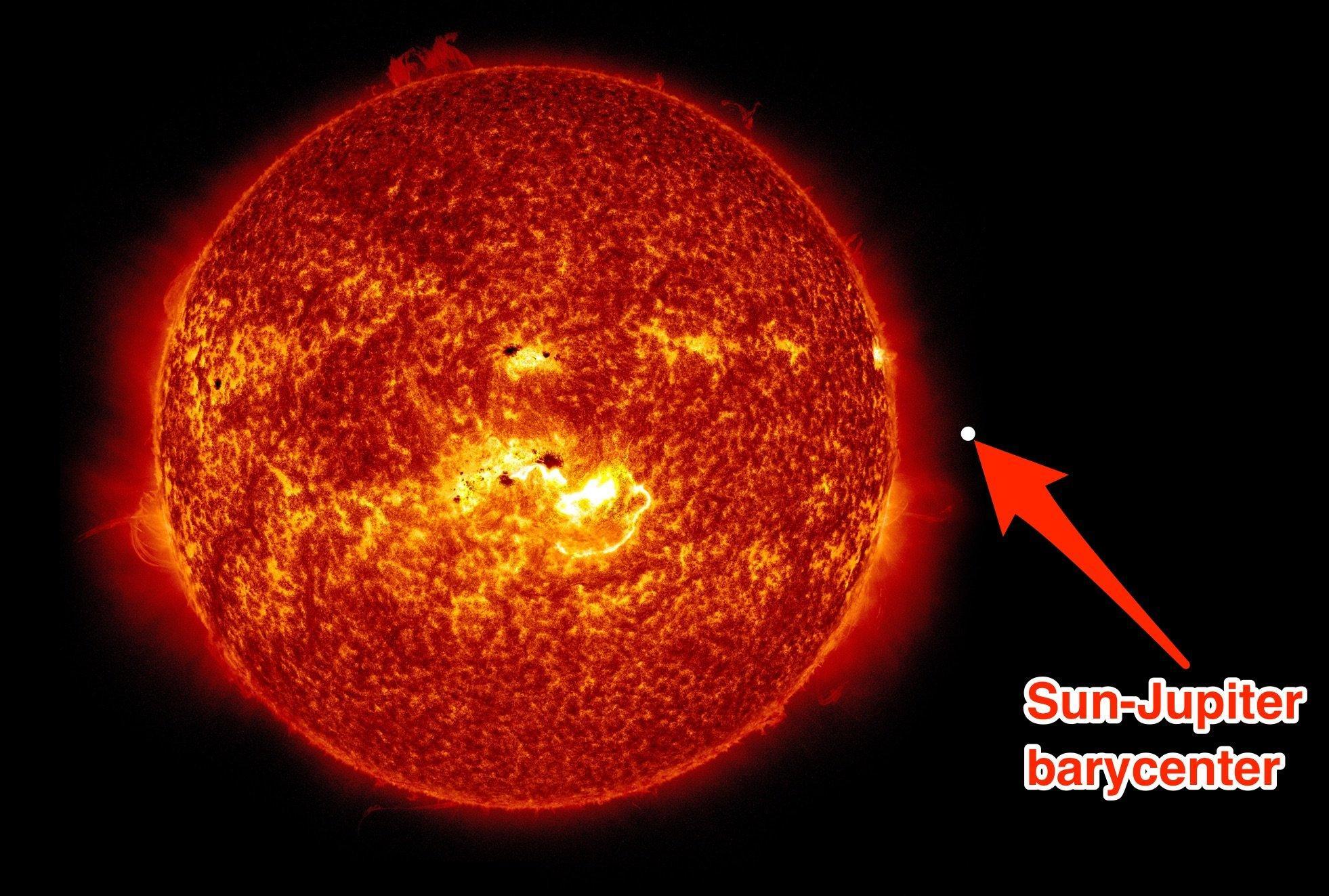The Independent's journalism is supported by our readers. When you purchase through links on our site, we may earn commission.
Jupiter is so big it does not actually orbit the sun
Your support helps us to tell the story
From reproductive rights to climate change to Big Tech, The Independent is on the ground when the story is developing. Whether it's investigating the financials of Elon Musk's pro-Trump PAC or producing our latest documentary, 'The A Word', which shines a light on the American women fighting for reproductive rights, we know how important it is to parse out the facts from the messaging.
At such a critical moment in US history, we need reporters on the ground. Your donation allows us to keep sending journalists to speak to both sides of the story.
The Independent is trusted by Americans across the entire political spectrum. And unlike many other quality news outlets, we choose not to lock Americans out of our reporting and analysis with paywalls. We believe quality journalism should be available to everyone, paid for by those who can afford it.
Your support makes all the difference.One of my daughter's favorite books is "Space Walk" by Salina Yoon. Each page shows a planet accompanied by a rhyming factoid about it.
But each time I read it to her — sometimes three or more times a day — I furrow my nerdy brow at this line: "Of all the planets that circle the sun, giant Jupiter is the biggest one."
The gas giant is indeed the largest planet in the solar system, weighing more than twice the mass of all the other planets, moons, asteroids, comets, and more combined.
However, Jupiter does not technically orbit the sun — because it's so dauntingly massive.
When a small object orbits a big object in space, the less massive one doesn't travel in a perfect circle around the larger one. Rather, both objects orbit a combined center of gravity.
For a puny, fragile planet like Earth, which is 0.000003 the mass of the sun, the center of gravity resides so close to the center of the sun that we don't even notice the slightly off-kilter orbit. It seems as though we circle the star.
The same is true of most other objects in the solar system — except Jupiter.
The gas giant is so big that it pulls the center of mass between it and the sun, also known as the barycenter, some 1.07 solar radii from the star's center — which is about 30,000 miles above the sun's surface.

Jupiter is about 0.001 as massive than the sun, but it's sizeable enough that both the sun and Jupiter orbit that point in space.
Essentially, that's how Jupiter and the sun move through space together — though the distances and sizes are far different.
So the next time you read a kid's book that says that Jupiter circles the sun, you'd be forgiven for trying to rip out that page. Just like my daughter enjoys doing.
Read more:
• This chart is easy to interpret: It says we're screwed
• How Uber became the world's most valuable startup
• These 4 things could trigger the next crisis in Europe
Read the original article on Business Insider UK. © 2016. Follow Business Insider UK on Twitter.

Join our commenting forum
Join thought-provoking conversations, follow other Independent readers and see their replies
Comments